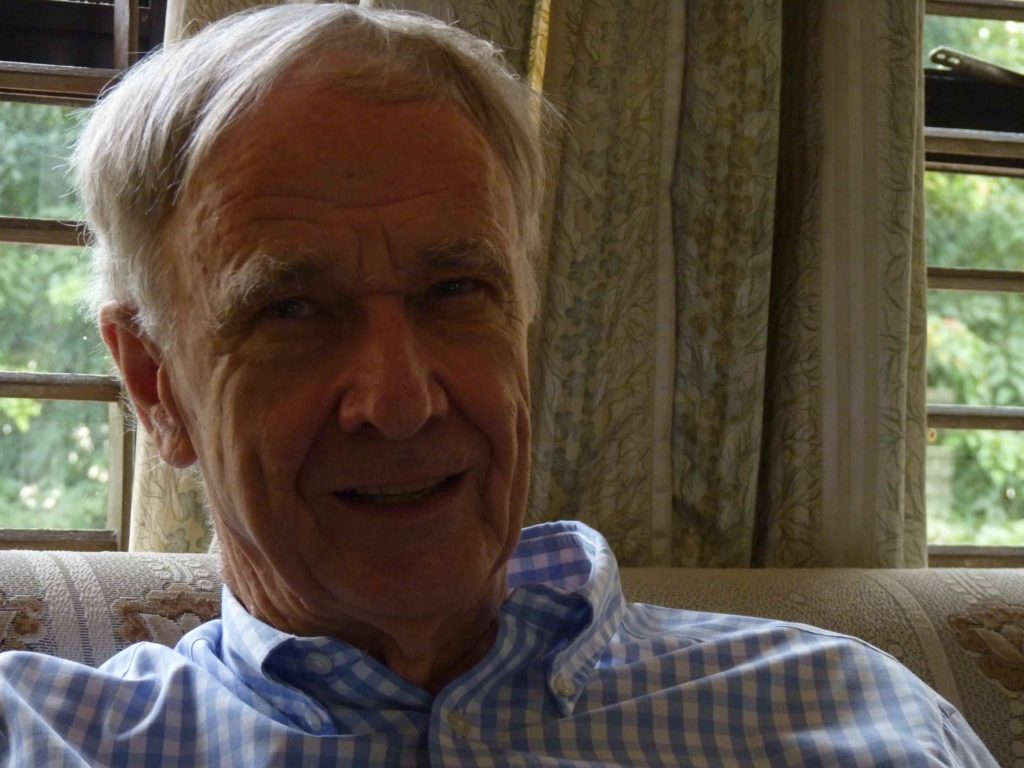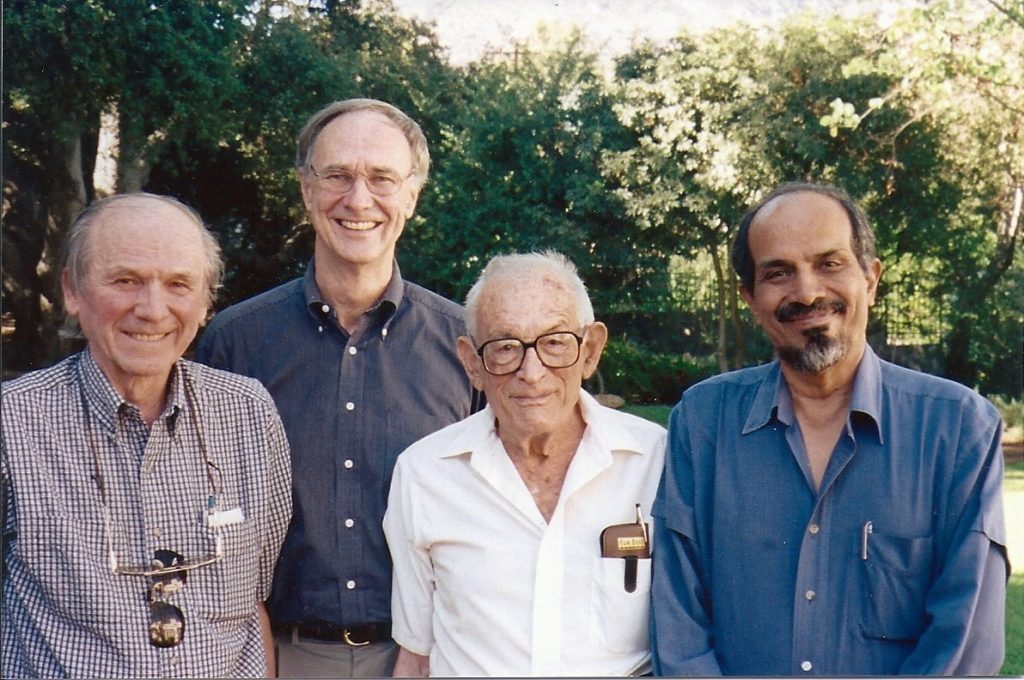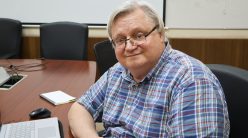Garry Brown is professor emeritus at the Department of Mechanical and Aerospace Engineering, Princeton University. He is a distinguished fluid dynamicist, well-known for his work with Anatol Roshko where they found unexpected order within turbulent flow. He was at IISc in late 2017, teaching a course on shear turbulence with his friend Roddam Narasimha. Excerpts from an interview with Connect.

In your 1974 paper with Anatol Roshko [the former Theodore von Kármán Professor of Aeronautics, Emeritus, at Caltech, who passed away in January 2017], you observed order within turbulence – “coherent structures” at the interface between two gases, one high speed and the other low speed, flowing past each other. What was the context for this work?
The purpose of the work was not to examine structure or any of the questions that the results finally seemed to address. The original motivation for the work was to study the behaviour of separated flow in compressible flow, where you have speeds in excess of that of sound. The temperature is lower and the density correspondingly higher for one stream [of fluid] than it is for fluid on the other side near the base of the body, where the temperature is higher and the density lower. The abstraction from that technologically important problem was a well- posed scientific one. And that’s where Anatol Roshko was particularly capable. He was able to make a connection between something that was technologically going to be important and translate it into something that was scientifically well-posed.
Did it also have something to do with the Apollo mission?
Well, yes. Roshko was prominent also as a consultant to industry. One of the questions related to the Apollo mission that needed to be addressed was if there was leak of oxygen from the capsule and hydrogen fuel from the base – and the hydrogen, because of its low density, propagated up the side of the Saturn V rocket – what’s the probability that they would be in a stoichiometric mixture that would be potentially flammable when they reached the same location? He didn’t know the answer but thought that it depended upon the ratio of their densities and their respective velocities. So the motivation was to do an experiment with different gases and with different densities.
Which gases did you use?
We used as principal gases nitrogen and helium. I started out with two streams of nitrogen because helium was so expensive. I designed a facility that would operate for three seconds at pressures up to ten atmospheres so that we could make measurements and take photographs of the flow field between these two streams at high densities (Reynolds number). We were astonished when we saw the photographs for the first time.
These were high-speed photographs based on a point-spark source. We used a large concave mirror, and the spark source was at the focus of the mirror, so we produced a parallel beam of light. And then variations in refractive index arising from small differences in gas concentrations or temperature would refract the light and that produced what’s called a shadowgraph. It enabled the turbulent fluid to be readily distinguished from non-turbulent fluid because it had small fluctuations in refractive index.
We saw these pictures, and I was tremendously troubled by them because I saw structure and order that I didn’t expect to see. I spent two months trying to get rid of it. And I couldn’t get rid of it. It seemed to be an intrinsic part of it.
At the time, the classical picture was that once it [the flow] became turbulent, you lost all structure and that it would be entirely statistical, there would be no evidence of any order. Well, that proved not to be true.
You’re currently teaching a course here at IISc with Roddam Narasimha. When did you first meet him and Satish Dhawan?
I think I met Prof Dhawan before I met Prof Narasimha. I was a research fellow then, and I had no idea of the eminent status of Prof Dhawan who was at the time the Director of IISc. But he came on a study leave to Caltech and taught a course. I was very fond of Satish – he was very open to any kind of discussion. We used to chat over lunch. It was on one such occasion that he received this remarkable letter from Prime Minister Indira Gandhi inviting him to head the Indian Space Research Organization [ISRO].
He was the one who mentioned Narasimha. I was back in Australia – Adelaide – after I left Caltech. I came to Bangalore to say hello to Prof Dhawan and at the same time to talk with Prof Narasimha. We had a lot in common and I admired his work very much. And we have been close colleagues ever since, from the mid-1970s.

What were your impressions of Dhawan?
I think Satish Dhawan would have agreed that his talents were broader and different from those of the greatest scientists. He had wonderful leadership qualities – a combination of transparent integrity and a willingness to be very successful through the success of others. That’s frequently not a characteristic of the greatest scientists – they often don’t see themselves as being successful through the lives of others. The best teachers do, but the others perhaps don’t. So I would put Satish Dhawan as one of those uniquely capable people who could lead others. And it’s clear that his record at IISc and ISRO is a true testament to that ability.
You’ve been a Rhodes scholar at Oxford, you’ve been at Caltech, Princeton, and you’ve served in universities and other research organisations in Australia. What would you say you’ve learned from having studied or worked at these different places?
One of the things I’ve come to appreciate is how important it is to define well the mission at the top. What are we actually there to do? At Princeton University, the mission was definitely not to educate the next generation of faculty members. It was to develop the leaders for the next generation of people in all walks of life. It was to try and recognise that the students are multi-talented in many cases, very capable. But their potential contribution to the country could be very broad and needed to be maximised. They needed to be given the opportunity to develop confidence, competence and creativity – the three Cs that I used to quote.
The strategic purpose of Princeton University was changed, on the 175th anniversary of Princeton, from the Woodrow Wilson quotation which had been developed in the 1920s. Woodrow Wilson’s statement was “Princeton in the Nation’s Service”. That statement was widened by Toni Morrison, the Nobel Prize winner [in Literature], who was the chair of the committee, to “Princeton in the Nation’s Service and In the Service of All Nations”. Once you say that, teaching becomes central. The faculty are thought of as “teacher-scholars”. Correspondingly, the metrics by which their salaries are determined are three: teaching, determined by feedback from the students; research; and scholarly citizenship, which has to do with participation in national committees, consulting for important industries and participation on professional scientific bodies.
At Caltech too, teaching was central. [Richard] Feynman even argued that there should not be institutes of advanced study for special scientists because he always felt that teaching made sure that people reviewed the broader areas of their knowledge continuously. [Hans] Liepmann, who became the director of GALCIT [Graduate Aerospace Laboratories of the California Institute of Technology], was very much of this view too. In that tradition, the motto for Caltech is the passing of the torch from one generation to another.




